It took seven months and 10 artists specially trained in the art of airbrush painting to finish the latest mural in Barrio Logan's Chicano Park -- a five-story tribute to lowriding culture in San Diego.
The shimmering brown and yellow mural is covered in photorealistic depictions of the Brown Image Car Club's history, from its founding by several car enthusiasts in 1970 to its many car shows that united the mostly Mexican-American community. Ochoa and his team scoured through 1,000 photos from the time period to include in the mural.
"I got kind of inspired to work (on this project), not necessarily about Brown Image Car Club. I liked the title "brown image" because even if you didn't know any of the history, you would still get a flavor of it," said Victor Ochoa, considered to be a pioneer of the Chicano art movement in San Diego and the muralist behind the project.
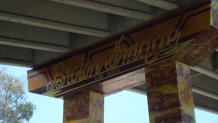
Get top local stories in Southern California delivered to you every morning. >Sign up for NBC LA's News Headlines newsletter.
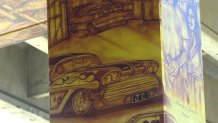
The piece of art, which covers two pillars and a beam that support the Coronado Bridge, was created by 10 airbrush artists led by Ochoa, an expert muralist who has had a hand in several of the Chicano Park murals as well as others around town. The entire piece was created using an authentic car-painting technique and includes real metal flake -- 30 pounds of it -- to give it the realistic shine of an automobile.
"We originally sanded it down to the base, we used real automobile primer, we used the metal flake and the varnish for that metal flake -- the most professional materials possible," Ochoa explained. "And even the root beer, it's in the candy apple tradition of transparent paint. So, all of that brown is transparent so you can see that gold flake coming through it."
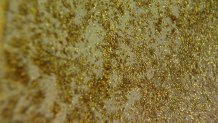
Ochoa adds its the largest mural in the world to use the entire automobile technique from start to finish. It took seven months to complete the project, from the time the scaffolding went up to the time it came down, and the project went through a lengthy city approval process before that.
U.S. & World
News from around the country and around the globe
In the mural, visitors will see depictions of Brown Image Car Club's history and its cultural impact. Each image within the painting is a true recreation of a photo taken in the 70s. One image shows 11 members of the car club that were present at what has become known as the Chicano Park takeover on April 22, 1970. Another depicts beloved Catholic priest Father Richard Brown blessing the lowriders at a neighborhood event. One building depicted in the painting shows what was at the time the car club's clubhouse. Soon, the building will become the Chicano Park Museum.
But of course, the star is the cars -- from the flame-painted '65 Chevy Impala to a larger-than-life undercarriage of a lowrider painted across a freeway support pillar.
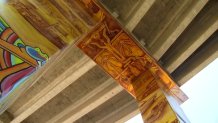
Lowrider car clubs have been a part of Southern California's Latino communities since the 1950s and have often been misrepresented. Ochoa hopes this project allows the San Diego community to recognize car clubs as an artistic endeavor and a way to unite the community.
In the 1960s, the California Department of Transportation extended Interstate 5 through what is now Barrio Logan and Logan Heights. In return, residents were promised a park under the Coronado Bridge but nearly a decade went by with no progress.
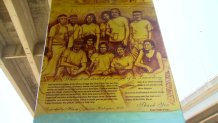
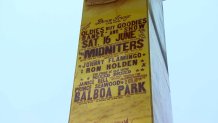
In 1970, residents learned the land would be used for a California Highway Patrol station, prompting to local community to rally. Hundreds of people, including members of the Brown Image Car Club, occupied the park for 12 days. A human chain was created around bulldozers to prevent any work from being completed. The action forced government agencies to pay attention and an agreement was reached leading to the founding of Chicano Park in 1971.
Two years later, murals started going up to represent the Mexican-American community in San Diego. Chicano Park, now a historical landmark, is home to the largest concentrations of Chicano murals in the world and a true dedication to the community that long fought for its right to be there.



